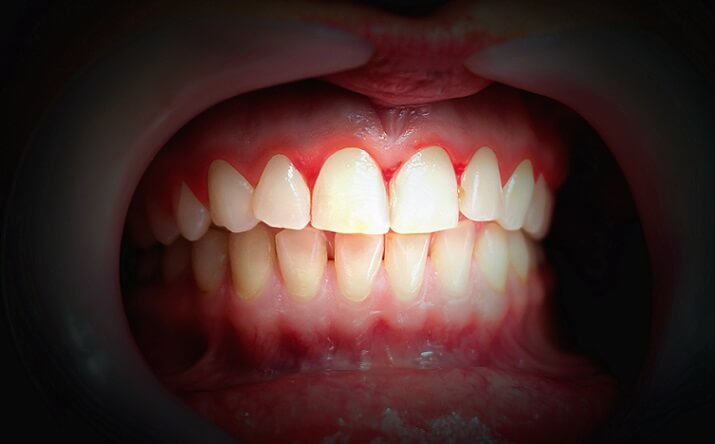Periodontal disease is quite prevalent in adults and increases with age. It is preventable through good oral hygiene practice and regular dental visits.
Detecting the disease in the early stages is important as it can then be reversed. Eliminating the disease early prevents it from progressing to an incurable stage.
In advanced stages, it can destroy bones that support the teeth and cause teeth to loosen or lead to tooth loss. The disease develops in four stages.
Table of Contents
ToggleStages of Periodontal Disease
Gingivitis – The first stage affects the teeth and gums. Mild symptoms are typical at this stage and usually painless. Bleeding of the gums may be the first symptom noticed. This is the only stage where it is possible to reverse the disease through good oral hygiene, regular dental exams, and routine dental cleanings.
Slight Periodontitis – At this second stage, the disease is not reversible but it is manageable. Infected gums pull away from the teeth causing pockets that allow food, plaque, and bacteria to settle in and cause infection. The infection spreads to the bone.
Moderate Periodontitis – Expect to experience more discomfort as inflammation spreads. More supporting bone will be lost, gums recede, and teeth loosen. Bacteria can start to attack your bloodstream and immune system as well as bone. At this stage, deep cleaning through scaling and root planing is required to prevent bone and tooth loss, increased bleeding, and receding gums.
Advanced Periodontitis – In the final stage, there is a 50-90% risk of bone loss, gums oozing pus, painful to chew, halitosis (severe bad breath), and loosening of teeth. This stage requires oral surgery and can lead to overall health problems if not treated.
Signs of Gum Disease
Because the early stages of gingivitis can be difficult to detect, it is important to have regular checkups with your dentist. There are symptoms you can watch out for. If you notice any signs or symptoms of gum disease, see your dental professional right away.
Signs of periodontal or gum disease are:
- Bad breath or bad taste that won’t go away
- Painful to chew
- Sensitive or loose teeth
- Gums that are tender, swollen, puffy, bleeding, or pulling away from the teeth
- Noticing blood when you brush your teeth or a pink tinge on your toothbrush
Treating Gum Disease
Practicing good oral hygiene with regular brushing and professional cleanings are the best way to prevent periodontal disease. If the disease has progressed, more intensive cleaning may be required to clean the tooth root below surfaces of the gum.
To help control and prevent gum disease it is important to brush and floss every day, get regular professional cleanings as advised to remove plaque, and see a dentist at least once a year.
Practice Good Oral Hygiene
If you are noticing signs of gum disease, book an appointment to see Dr. Beeram as soon as possible. Most adults are at risk of gingivitis if they don’t practice good oral health by brushing their teeth, flossing regularly, and getting regular check-ups with their dentist. Take the necessary steps to preserve the health of your teeth and prevent the development of this gum disease.
